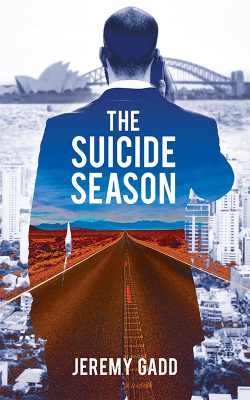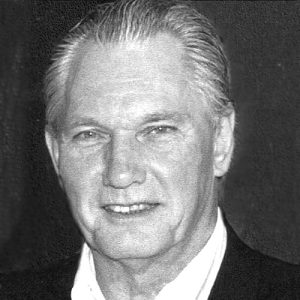Click here to return to the series
 Thanks to Stormbird Press for allowing Dragonfly to run their interview with Jeremy Gadd about his Australian novel The Suicide Season. I’ve worked with the team at Stormbird Press for a few years now, whether collaborating on projects or talking with their authors–before the press was even around. I also contributed to their anthology Tales from the River, which presents a timely collection of river literature from twenty-one authors exploring our vital relationship with rivers and how they shape our lives. In this anthology, I wrote about the Wild Atnarko River, near Bella Coola, BC–the gateway to the Great Bear Rainforest–and the unforgettable experience that I had there.
Thanks to Stormbird Press for allowing Dragonfly to run their interview with Jeremy Gadd about his Australian novel The Suicide Season. I’ve worked with the team at Stormbird Press for a few years now, whether collaborating on projects or talking with their authors–before the press was even around. I also contributed to their anthology Tales from the River, which presents a timely collection of river literature from twenty-one authors exploring our vital relationship with rivers and how they shape our lives. In this anthology, I wrote about the Wild Atnarko River, near Bella Coola, BC–the gateway to the Great Bear Rainforest–and the unforgettable experience that I had there.
It was heartbreaking for me to hear that Stormbird’s office was ravaged by a wildfire recently. They wrote to friends:
The Stormbird Press office is currently the middle of a fire burning through an unprecedented dry landscape. The wildfire started Friday, December 20, 2019. The office has been evacuated, and key staff are working as volunteer firefighters within the community to bring the fire under control. Our business activities have been suspended for the time being.
I have witnessed the hard work of staff Donna Mulvenna and Margi Prideaux. They are absolutely dedicated to environmental preservation and writing, and I wish them all the best as they fully get up and running again.
Stormbird Press is deeply connected to the global environment movement, as an imprint of Wild Migration—a not-for-profit conservation organisation that has worked around the world for years to build the participation capacity of wildlife scientists, wildlife policy experts and civil society, to secure international wildlife conservation. We know that if local communities are empowered, they can be guardians of their biological and cultural heritage and the wildlife they live with. Indeed, we believe the rich tapestry and diversity of life includes human and non-human cultures.
About the Book
The Suicide Season was originally published by Moon Willow Press in 2015 and was recently acquired by Stormbird Press in April 2019.
When demoralised Warren Yeats abandons his failing business, his ex-wife and his city lifestyle to embark on a road trip with more twists and turns than Sydney’s streets, he has no idea how gruelling the outback can be.
Set during tropical Australia’s oppressively humid build-up to the annual monsoon—the Suicide Season—when tempers are short, children are constantly irritable, and adults are tight-lipped, Yeats stumbles across an illegal wildlife poaching operation, falls in love with an attractive female mechanic, and becomes an unwitting trespasser on Aboriginal land.
Whether sharing Yeats’ admiration for an apricot-hued sunset as it soars across an Aurora Borealis-like sky, watching nectar-eating parrots getting tipsy on the fermenting blossoms of paper bark trees or learning how to bake damper over hot coals, odds are you have never enjoyed a journey as unique as this, following one of life’s nicest losers as he becomes a winner.
Chat with Jeremy Gadd
SP: You live in Sydney now, but where are you from?
JG: I grew up in Armidale in Northern New South Wales. It was a sleepy, relatively isolated rural community in the 1960s but, as a child, I was allowed to roam the bush by myself. I came into contact with native flora and fauna from an early age and my appreciation was stimulated accordingly. Birdlife was prolific then and we had family holidays which involved driving to the coast on dirt roads, through the rain forests ringing with bell-birds around Dorrigo Mountain down to the Bellingen River, Coffs Harbour, Valla Beach, Sawtell or Grafton. We often camped near the waterholes and wild rivers or went cray-bobbing in murky dams. My imagination was stirred during nights listening to stories beside a glowing fire or staring into an infinity of stars.
SP: How did you become involved with the subject or theme of your book?
JG: I lived in Europe for several years and, on returning to Australia, was determined to see and learn more about my country. For several years, my then wife and I made annual three month long road trips to tropical northern Australia and lived under canvas while doing so. We would explore remote regions, including the Gulf Country and The Kimberley, and I would make notes about incidents or places. On returning home, the notes would become short stories. One story grew into the novel The Suicide Season. It was on these research trips that I became aware of the threats to Australia’s bio-diversity.
SP: What cultural value do you see in storytelling?
JG: I see huge value, but I despair that traditional Australian culture is being undermined and negated by the current education system—which teaches that an advertisement is of the same literary value as a Shakespearean text, that there is little value in studying novels or poetry. In a society in which someone considers them self a Samoan Australian, Greek Australian, Indian or Chinese Australian, what is Australian culture? Even Australian geography is rarely taught.
SP: How does your book relate to your spiritual practice or other life path?
JG: I believe humanity has an obligation to the planet and to other species—if only for the legacy we leave to our descendants—to preserve as well as produce. The Suicide Season tries to draw attention—both in its references to CITES (Convention on International Trade in Endangered Species 1973) and, in a more subliminal way, through its plot and its descriptions of nature—to the need to be environmentally aware, and of the need to preserve the natural environment that provides homes to native species. The Suicide Season alludes to the majesty of nature and to humanity’s increasingly precarious relationship with the environment.
SP: What were goals and intentions in this book, and how well do you feel you have achieved them?
JG: The goal was to publicise the threat to Australia’s wildlife represented by world-wide criminal groups in an entertaining, non-hectoring way, and I feel that, by illustrating the awful process associated with poaching, related within the construct of a larger story told with drama and humour, this has been accomplished. Perhaps some perceptive movie director will decide to film The Suicide Season and thus introduce many more people to the danger poaching represents to indigenous animals and birds.
***
I talked with Jeremy as well about the recent catastrophic wildfires in Australia. He told me that page 273 of his novel addressed the issues of typical fires (the book was written before the more recent wildfires):
‘Evening brought respite from the heat, and he watched as smoke rose from numerous fires.
Yeats knew some would have been started by the distant lightning that linked and flickered between the clouds in a natural son et lumière.
Others would have been man-made, started by campers, Aborigines or officers from the National Parks and Wildlife Service as part of their programme of selective burning to create barriers to hot bush fires and encourage new growth. The Aborigines had been doing it for millennia.’
He told me additionally:
‘Hot bush fires’ are a largely recent occurrence in Australia – since the arrival of European civilization and the gradual decline of Indigenous fire management.
It is notable that few ‘hot fires’ occur in the Northern Territory of Australia where Aboriginal rangers are employed and annually walk through the bush during the early or late Dry season trailing a burning rope. The fires created are slow, low fires that gently weave through and devour the recent season’s leaf litter allowing wild life to wriggle, writhe, amble or scramble out of the way of the flames. Australia’s flora is conditioned to fire and many species only seed when heat is applied.
In the temperate southern Australian states, however, where national parks are managed by state government bureaucracies, the recent bush fires reached 600 degrees centigrade, melted aluminum cars and incinerated trees and wild life.
The most recent extreme wildfires have been helped by rain in the last weeks, but the Union of Concerned Scientists has a Got Science interview with Dr. Mel Fitzpatrick about the unprecedented wildfires and how they go beyond the types of fires Australia is used to and toward “this is what climate change looks like: wildfires in Australia”. Further, The Guardian recently recognized the role of fiction when it comes to climate disasters:
Bushfires have always played a significant role in telling Australian stories. But authors of recent Australian ecofiction – books that explore connections between Australia’s natural world, the human and the nonhuman – are shifting that traditional bushfire narrative, drawing connections between climate crisis and bushfire, and showing that what is occurring in Australia can no longer be considered “natural” or “normal”.
About the Author
 Jeremy Gadd is an Australian author and poet. After graduating from the National Institute of Dramatic Art, he worked extensively in professional theatre in Australia and the United Kingdom before concentrating on his writing, which includes plays, the publication of novels, fifty short stories and poetry. He has also written dialogue for a dance performed by The Sydney Dance Company at the Sydney Opera House, and he collaborated on one of the first livre d’ artistes to be produced in the United Kingdom since William Morris, a work that is now in rare book collections. He later earned Master of Arts with Honours and PhD degrees from the University of New England. He is a Writing Fellow of the Fellowship of Australian Writers (NSW).
Jeremy Gadd is an Australian author and poet. After graduating from the National Institute of Dramatic Art, he worked extensively in professional theatre in Australia and the United Kingdom before concentrating on his writing, which includes plays, the publication of novels, fifty short stories and poetry. He has also written dialogue for a dance performed by The Sydney Dance Company at the Sydney Opera House, and he collaborated on one of the first livre d’ artistes to be produced in the United Kingdom since William Morris, a work that is now in rare book collections. He later earned Master of Arts with Honours and PhD degrees from the University of New England. He is a Writing Fellow of the Fellowship of Australian Writers (NSW).
Dear Mary,
Thank you for your kind words and for your encouragement and support as we work to rebuild the home and offices of Stormbird Press. Jeremy’s book offers a delightful insight into some of the lesser known parts of Australia and describes some of the country’s fauna and flora in wonderfully descriptive prose. Amongst the embers, his words remind us how beautiful, and treasured, our country is. Warmest regards, Donna–Stormbird Press.